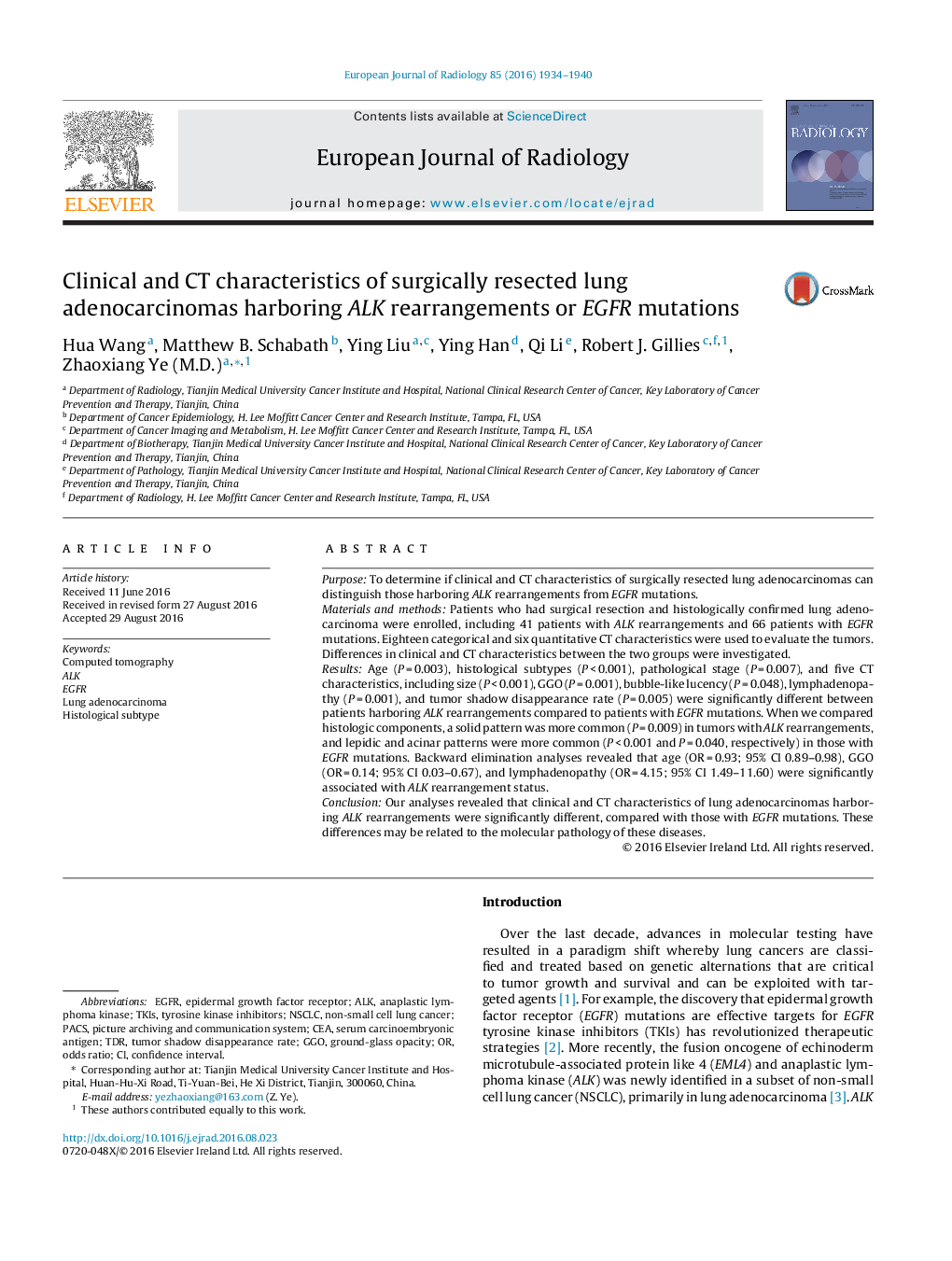| Article ID | Journal | Published Year | Pages | File Type |
|---|---|---|---|---|
| 4224794 | European Journal of Radiology | 2016 | 7 Pages |
PurposeTo determine if clinical and CT characteristics of surgically resected lung adenocarcinomas can distinguish those harboring ALK rearrangements from EGFR mutations.Materials and methodsPatients who had surgical resection and histologically confirmed lung adenocarcinoma were enrolled, including 41 patients with ALK rearrangements and 66 patients with EGFR mutations. Eighteen categorical and six quantitative CT characteristics were used to evaluate the tumors. Differences in clinical and CT characteristics between the two groups were investigated.ResultsAge (P = 0.003), histological subtypes (P < 0.001), pathological stage (P = 0.007), and five CT characteristics, including size (P < 0.001), GGO (P = 0.001), bubble-like lucency (P = 0.048), lymphadenopathy (P = 0.001), and tumor shadow disappearance rate (P = 0.005) were significantly different between patients harboring ALK rearrangements compared to patients with EGFR mutations. When we compared histologic components, a solid pattern was more common (P = 0.009) in tumors with ALK rearrangements, and lepidic and acinar patterns were more common (P < 0.001 and P = 0.040, respectively) in those with EGFR mutations. Backward elimination analyses revealed that age (OR = 0.93; 95% CI 0.89–0.98), GGO (OR = 0.14; 95% CI 0.03–0.67), and lymphadenopathy (OR = 4.15; 95% CI 1.49–11.60) were significantly associated with ALK rearrangement status.ConclusionOur analyses revealed that clinical and CT characteristics of lung adenocarcinomas harboring ALK rearrangements were significantly different, compared with those with EGFR mutations. These differences may be related to the molecular pathology of these diseases.
